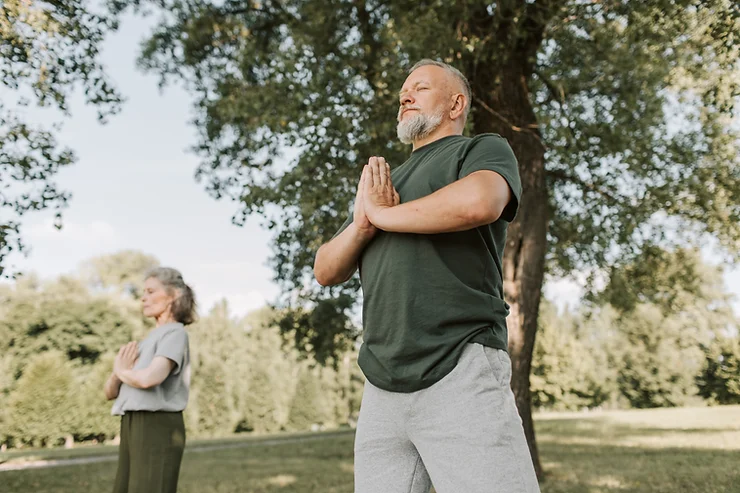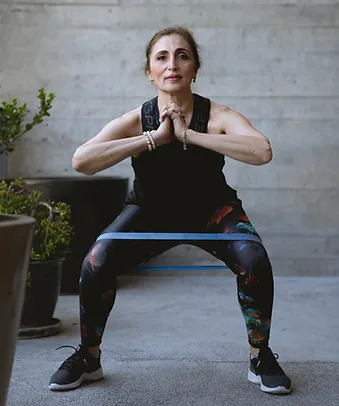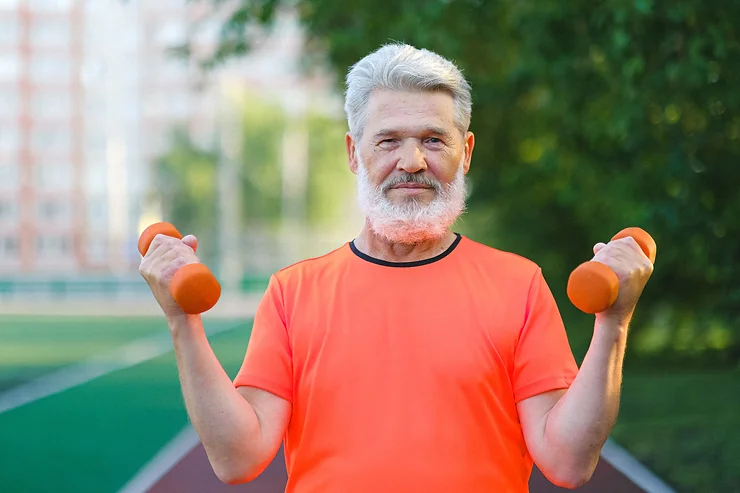As we age, it can be harder to do the same things we did when we were younger. And while it can sometimes be frustrating not to have the same stamina, strength, or flexibility you once had, there are huge benefits to keeping active as the years pass.
According to the Centers for Disease Control, even people with medical conditions such as arthritis, heart disease, obesity, and high blood pressure can benefit from regular, moderate physical activity. Plus, if you’re getting your exercise in a group setting, the community you workout with can play a significant role in your levels of social satisfaction.
Why It’s Important to Stay Active As You Age
Staying active as you age can provide big health benefits. For example, some of the many health benefits you can get from regular fitness routine including pain reduction, improved flexibility and balance, and a lower risk for chronic disease and injuries:
- Bone Loss Prevention: Men and women lose bone density as they age and strength training is a proven way to counteract the loss and restore bone density. Stronger bones are less susceptible to breaks and help promote good balance. With accidental falls as the leading cause of injury-related death in adults 65 and older, reducing the risk of falls with an exercise program that improves balance can have an important impact on longevity and the ability to live independently for long.
- Osteoarthritis Pain Relief: If you’re suffering from arthritis, it may seem like moving around will only exacerbate your pain. But the truth is low-impact exercise and being more active can reduce the stiffness and pain from arthritis. It does this by strengthening the muscles around your joints and reducing the pressure on them. Being active can also ease the inflammation in your joints which will reduce your pain.
- Chronic Disease Prevention: Exercise really is the best medicine, especially for older adults. Physical activity can help protect you from many illnesses including cardiovascular disease, colon cancer, diabetes, obesity, and hypertension. For those who already have one of these condition, regular exercise can help lessen your symptoms and reduce cognitive decline.
Beyond the physical health benefits older adults gets from staying active as they age, they can also improve their mental and emotional wellbeing while increasing their energy levels and self-confidence. Participating in a regular fitness routine can lead to:
- Improved Immunity: This study found a link between moderate exercise and a lower occurrence of acute respiratory illness. The findings suggest “that the anti-inflammatory effects of physical activity enable better immune function” and may also improve the performance of immune cells.
- Improved Mood: No matter how you feel going into your workout, you probably feel better when you’re finished. That’s because exercise is known to help relax you. It can aid in easing anxiety and depression symptoms and create an overall sense of wellbeing. A study by kinesiologists at McMaster University found that the mood-boosting benefits of exercise were still present in men 65 and older.
With so many reasons to engage in a regular fitness routine as you age, you may be asking yourself “where do I start?” Before you sign up for the next road race, there are a few things to consider.

How To Start A Fitness Routine As You Age
The good thing about starting a fitness routine at any age is that it’s never too late to start! All older adults can reap the benefits of regular exercise, but you want to make sure you’re not biting off more than you can chew too quickly, especially if it’s been a while since you engaged in physical fitness.
Before you get started with your new workout plan, you’ll want to check in with your doctor to make sure you won’t exacerbate any pre-existing health conditions. Exercising safely will ensure you stay injury-free and get the most out of your workouts. You doctor may even recommend certain types of fitness to get you started.
Once you’re cleared to begin an exercise plan, you’ll want to consider which type of fitness you’ll enjoy most. Trying different activities until you find one or a few that you like doing is important as it will help you stay motivated and stick to your fitness routine.

How Often Should Older Adults Exercise?
For older adults, that is those who are 65 and up, the recommended amount of exercise is at least 150 minutes per week of moderate intensity activity like brisk walking. If vigorous-intensity activity like hiking, jogging, or running is more your speed, then 75 minutes a week is the recommended amount. The recommendation also calls for at least 2 days a week of muscle-strengthening activities and 3 days a week of balance-improving activities (like standing on one foot).
What’s most important is that you keep moving. Even if you’re not able to get as much exercise as the recommendation specifies, you’ll benefit from the amount you do get. You’ll probably find that once you get started in a fitness routine, your stamina and motivation will increase, and you can work up to bigger goals and more time spent exercising.

What Kind Of Exercise Is Good For Older Adults?
Getting started with an exercise routine can feel intimidating, but it doesn’t have to be. There are plenty of resources available to help you navigate the best types of exercise for you to start with, especially as an older adult.
Ideally, exercise routines for older adults should incorporate a blend of aerobic exercise, strength/resistance training, and stretching/flexibility exercises. To put all of these together into a workout plan, consider working with a certified personal trainer in a one-to-one setting or with a small group.
As you’re thinking about what types of exercises are best for aging adults, you’ll want to consider these workouts:
- Resistance Band Training: There are a lot of reasons to add resistance band training to your workout routine. They are a very inexpensive piece of exercise equipment so you can do them at home, the workouts are very user-friendly and a great starting point for beginners, and they help strengthen the core, which improves posture, balance, and mobility. The types of exercises you can expect to do in a resistance band workout include leg and tricep presses, bicep curls, band pull aparts, and lateral raises.
- Body Weight Workouts: Many aging adults can experience muscle loss, which can be particularly problematic as it leads to hormone problems and interferes with the ability to metabolize protein. One of the best ways for older adults to maintain muscle and avoid atrophy is body weight workouts. Like resistance band training, the cost of equipment is minimal, perhaps just a floor mat, and the benefit is high. Some great body weight exercises for older adults include step-ups, bird dogs, hip bridges, chair squats, and side lying circles.
- Dumbbell Strength Training: If you are looking for a workout that is highly effective, look no further than dumbbell strength training. It has been shown to reduce symptoms of diabetes osteoporosis, back pain, and depression in addition to aiding in weight management, glucose control, and increased metabolism. In a dumbbell workout, aging adults can isolate and focus on strengthening particular muscle groups while improving balance and flexibility. During a dumbbell workout for older adults, you can expect to do exercises like bent-over rows, tricep extensions, bicep curls, overhead presses, and front raises.
As you’re thinking about your workout plan as you age, there are some exercises to avoid if you are over the age of 65. Exercises like bench presses, abdominal crunches, deadlifts, power cleans, and HIIT training can put an unhealthy strain on older adults who already have joint pain, atrophied muscles, posture problems, or issues with balance.
The best way to create a workout plan is to work with a certified personal trainer who can assess your current fitness levels, goals, lifestyle, and capabilities to design a training plan that is customized to you. They will be able to coach you around the proper form for each exercise you’re doing so you’ll reduce your risk of injury or muscle strain which will keep you performing your best so you can continue to age with health and happiness.
Looking for a personal trainer to help you start a fitness routine? Call Inspire Fitness Training Studio in Arlington, MA today at 781-643-0002 or email [email protected] and get more details.
Joe Rindone, NCPT is a certified personal trainer and the Founder of Inspire Fitness Studio in Arlington, MA. Joe’s passion for fitness has motivated him to become one Greater Boston’s best personal trainers. He has earned many fitness and nutrition certifications including an Injury/Recovery Exercise certification and a Functional Flexibility certification. An athlete throughout high school and college, Joe has always enjoyed being active. Currently he enjoys road races, working with his boxing coach, kettlebell training and getting out for a round of golf in his spare time.
